
Overview
The paints, coatings, and pigments industry produces and distributes paints, coatings, and pigments for various applications. Paints are liquid or semi-solid materials used for protection and decoration, coatings provide protective layers for surfaces, and pigments give color and other properties to paints and coatings. The industry involves research, manufacturing, formulation, testing, and distribution, and focuses on meeting customer needs for performance, aesthetics, and sustainability. Environmental considerations and regulations are important factors in the industry’s development.
GAO Tek’s chemical melting point ester has the following applications in paints, coatings, and pigments:
- Quality control: Our melting point tester is an essential quality control measure in the paints, coatings, and pigments industry. It helps ensure that the raw materials and finished products meet the required specifications and standards. By determining the melting point of the substances used, manufacturers can assess the purity, composition, and consistency of the materials, which directly affects the product’s performance and durability.
- Material identification: Different pigments and additives in paints and coatings have distinct melting points. Our chemical melting point testers can be used to identify unknown materials by comparing their melting points with reference standards. This helps manufacturers verify the authenticity and composition of the materials they receive and ensure they are using the correct ingredients in their formulations.
- Formulation development: GAO Tek’s melting point tester is valuable in the development and optimization of paint and coating formulations. By measuring the melting point of various components, manufacturers can determine the compatibility of different materials, assess their solubility and dispersion characteristics, and identify potential interactions or phase separations. This information aids in formulating stable and high-performance paint and coating products.
- Determination of curing and drying temperatures: The curing and drying process is critical in paints, coatings, and pigments. Our chemical melting point testers can be used to determine the melting point range of the binder or resin systems used in these products. This information helps establish suitable curing and drying temperatures to achieve optimal film formation, adhesion, and durability.
- Quality assessment of raw materials: Paints, coatings, and pigments rely on a wide range of raw materials, including resins, solvents, pigments, and additives. Our melting point testers allow manufacturers to evaluate the quality and consistency of these raw materials. Deviations in melting point values can indicate impurities, variations in composition, or the presence of contaminants, enabling manufacturers to reject or modify the materials accordingly.
- Batch-to-batch consistency: Consistency is crucial in the production of paints, coatings, and pigments. By monitoring the melting point of raw materials and finished products across different batches, manufacturers can ensure consistent quality and performance. Deviations in melting points can indicate process variations or changes in material composition, allowing manufacturers to take corrective measures to maintain batch-to-batch consistency.
Complying with Government Regulations
GAO Tek’s chemical melting point tester complies or helps our customers comply with the U.S. government regulations such as:
- Environmental Protection Agency (EPA) Regulations: The EPA regulates the use, handling, and disposal of hazardous substances and chemicals under various acts, including the Toxic Substances Control Act (TSCA) and the Clean Air Act (CAA). These regulations aim to protect human health and the environment from the potential risks associated with chemicals used in the industry.
- Volatile Organic Compounds (VOC) Regulations: VOC emissions from paints, coatings, and related products can contribute to air pollution and have adverse health effects. The EPA, as well as state and local regulatory agencies, have established limits on VOC content in these products. Compliance with VOC regulations often requires testing and certification of products, which may include specific testing methods and criteria but may not directly address chemical melting point testers.
- Occupational Safety and Health Administration (OSHA) Regulations: OSHA sets health and safety standards for workplaces, including those in the paints, coatings, and pigments industry. These standards address various aspects, such as worker exposure to hazardous chemicals, proper handling and storage of materials, personal protective equipment (PPE) requirements, and training programs.
- Hazardous Waste Regulations: The Resource Conservation and Recovery Act (RCRA) governs the management and disposal of hazardous waste generated by the industry. It outlines requirements for proper handling, storage, transportation, and disposal of hazardous waste materials.
- Consumer Product Safety Commission (CPSC) Regulations: CPSC regulations focus on product safety, including paints and coatings intended for consumer use. These regulations may cover labeling requirements, lead content restrictions, and other safety considerations.
- State and Local Regulations: In addition to federal regulations, individual states and local jurisdictions may have their own specific regulations and requirements pertaining to the paints, coatings, and pigments industry. These can vary widely and may address issues such as air quality, water pollution, hazardous waste management, and worker safety.
GAO Tek’s chemical melting point tester complies or help our clients comply with Canadian regulations such as:
- Canadian Environmental Protection Act (CEPA): CEPA is a federal law that regulates substances that may be harmful to human health or the environment. It includes provisions for the assessment and management of chemicals, including those used in paints, coatings, and pigments. While CEPA doesn’t specifically address chemical melting point testers, it may impact the regulations and restrictions on the use of certain chemicals and their disposal.
- Hazardous Products Act (HPA): HPA, along with the associated Controlled Products Regulations (CPR) and Workplace Hazardous Materials Information System (WHMIS), governs the labeling, classification, and safety data sheet (SDS) requirements for hazardous products, including paints, coatings, and pigments. These regulations aim to ensure the safe handling, storage, and use of chemicals in the workplace. Chemical melting point testers may be subject to these regulations if they contain hazardous substances.
- Volatile Organic Compounds (VOC) Regulations: VOC emissions from paints, coatings, and related products contribute to air pollution and have health and environmental impacts. The Canadian government has established VOC regulations that set limits on the VOC content in various consumer and industrial products. Paints, coatings, and pigments fall under these regulations, and manufacturers must comply with VOC limits in their products. While chemical melting point testers themselves may not directly fall under VOC regulations, the paints, coatings, and pigments tested using these instruments must meet VOC requirements.
- Provincial and Territorial Regulations: In addition to federal regulations, provinces and territories in Canada may have their own regulations and guidelines specific to the paints, coatings, and pigments industry. These regulations can vary and may include additional requirements related to environmental protection, occupational health and safety, product labeling, disposal of hazardous materials, and more. It is important for businesses in this industry to be aware of and comply with applicable provincial and territorial regulations.
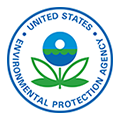 Environmental Protection Agency Regulations
Environmental Protection Agency Regulations
 Volatile Organic Compounds Regulations
Volatile Organic Compounds Regulations
 Hazard Analysis Critical Control Point
Hazard Analysis Critical Control Point
 Occupational Safety and Health Administration Regulations
Occupational Safety and Health Administration Regulations
 Resource Conservation and Recovery Act
Resource Conservation and Recovery Act
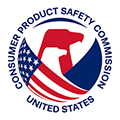 Consumer Product Safety Commission Regulations
Consumer Product Safety Commission Regulations
 Department of Defence
Department of Defence
 Connecticut Environmental Policy Act
Connecticut Environmental Policy Act
 Patent and Trademark Resource Centers
Patent and Trademark Resource Centers
 Environmental Protection Agency
Environmental Protection Agency
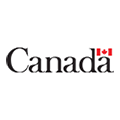 Canadian Environmental Protection Act
Canadian Environmental Protection Act
 Workplace Hazardous Materials Information System
Workplace Hazardous Materials Information System
Case Studies of Chemical Melting Point Tester in Paints, Coatings, and Pigments
Here are some practical examples of using a chemical melting point tester in paints, coatings, and pigments:
Sherwin-Williams: Sherwin-Williams, a leading paints and coatings manufacturer in the USA and Canada utilized chemical melting point testers in their quality control processes. These testers were used to determine the melting points of various chemical compounds and pigments used in their paint formulations. Accurate melting point data ensured the paints met the required performance standards and had proper application characteristics.
PPG Industries: PPG Industries, a global supplier of paints, coatings, and specialty materials, incorporated chemical melting point testers in their research and development laboratories. These testers were used to evaluate the melting behavior of different additives and ingredients in their coating formulations. Understanding the melting properties helped optimize the performance and durability of their products.
BASF: BASF, a major chemical company with operations in the USA and Canada, employed chemical melting point testers in their pigment manufacturing processes. These testers allowed them to assess the melting points of pigments and colorants, ensuring consistent quality and compatibility with different paint and coating systems.
AkzoNobel: AkzoNobel, a multinational paints and coatings company, utilized chemical melting point testers in their product development and quality control procedures. The testers were used to measure the melting points of various chemical components and raw materials used in their coatings and pigments. This information helped ensure the stability, performance, and color consistency of their products.
RPM International Inc.: RPM International Inc., a diversified coatings and specialty chemicals company, implemented chemical melting point testers in their research and development laboratories. These testers were used to analyze the melting behavior of different chemical additives and resins used in their coating formulations. Understanding the melting properties helped optimize the application characteristics and performance of their coatings.
The main page of the Chemical melting point tester has more information on GAO’s Chemical melting point tester and their applications in various industries:GAO Tek’s chemical melting point testers
Use of Chemical Melting point Tester with Leading Software and Cloud Services in Paints, Coatings, and Pigments
GAO Tek has used or has facilitated its customers to use GAO’s chemical melting point tester with some of the leading software and cloud services in their applications. Examples of such leading software and cloud services include:
- Melting Point Analysis Software: Many manufacturers of chemical melting point testers provide proprietary software specifically designed for their instruments. These software solutions offer features such as temperature control, data logging, real-time monitoring, and automated analysis of melting point results.
- Laboratory Information Management Systems (LIMS): LIMS software is widely used in various industries, including the paints, coatings, and pigments sector. It allows for the management of laboratory processes, sample tracking, data capture, and reporting. LIMS can be customized to incorporate specific requirements for chemical melting point testing and integration with other laboratory systems.
- Data Analysis and Visualization Software: Statistical analysis and visualization software packages, such as Microsoft Excel, Minitab, or Origin, can be utilized to process and analyze the melting point data obtained from chemical melting point testers. These software solutions enable data manipulation, graphical representation, trend analysis, and statistical calculations.
- Laboratory Information Systems (LIS): LIS software is commonly used in research and testing laboratories. While primarily focused on sample management and workflow automation, certain LIS platforms may provide functionality for instrument control and data acquisition. LIS can be customized to incorporate chemical melting point testing procedures and result management.
- Calibration and Quality Control Software: To ensure the accuracy and reliability of chemical melting point testers, calibration, and quality control software can be employed. These software solutions assist in performing instrument calibration, tracking calibration records, scheduling maintenance, and managing quality control procedures.
- Compliance and Regulatory Software: Compliance software solutions help manage regulatory requirements, including documentation, reporting, and adherence to industry standards. In the paints, coatings, and pigments industry, compliance software can assist with tracking and managing regulatory obligations related to product safety, labeling, and environmental regulations.
- Melt View: Melt View is a popular software specifically designed for analyzing melting point data. It allows users to visualize and interpret melting curves, determine melting point ranges, and calculate other parameters such as melting onset, peak temperature, and melting enthalpy. Melt View often comes bundled with melting point apparatus from various manufacturers.
- LabSolutions: LabSolutions software, developed by Shimadzu, is a versatile analytical software that supports various instruments, including melting point testers. It offers data acquisition, data processing, and reporting functionalities, allowing users to analyze melting point data and generate comprehensive reports.
- Melting Point Software Suite: Some melting point instrument manufacturers provide their own dedicated software suites for analyzing data generated by their instruments. These software packages often include features for data acquisition, curve fitting, and automated detection of melting points and melting point ranges.
- Origin: Origin is a general-purpose data analysis and graphing software widely used in scientific research and analysis. It offers a wide range of tools for data processing, curve fitting, and visualization, making it suitable for analyzing melting point data obtained from chemical melting point testers.
- Amazon Web Services (AWS): AWS offers a variety of cloud services that can be utilized for data analysis and storage, such as Amazon EC2, Amazon S3, Amazon Redshift, and AWS Lambda. These services can handle large volumes of data, enable secure storage, and perform scalable data processing.
- Microsoft Azure: Azure provides a range of cloud services suitable for data analysis and application deployment, including Azure Machine Learning, Azure Blob Storage, Azure Functions, and Azure IoT Hub. These services enable data processing, machine learning algorithms, and integration with IoT devices.
- Google Cloud Platform (GCP): GCP offers services like Google BigQuery, Google Cloud Storage, Google Cloud Functions, and Google Cloud IoT Core. These services facilitate data storage, scalable processing, and integration with IoT devices for analyzing and managing data from Chemical Melting Point Testers.
- IBM Cloud: IBM Cloud provides services such as IBM Watson Studio, IBM Cloud Object Storage, IBM Cloud Functions, and IBM IoT Platform. These services support data analysis, storage, and real-time monitoring for Chemical Melting Point Tester applications in the paints, coatings, and pigments domain.
- Oracle Cloud Infrastructure (OCI): OCI offers services like Oracle Analytics Cloud, Oracle Object Storage, Oracle Functions, and Oracle IoT. These services provide capabilities for data analysis, storage, and real-time monitoring, enabling applications involving Chemical Melting Point Testers.
- Alibaba Cloud: Alibaba Cloud offers services like Max Compute, Function Compute, Data Works, and IoT Platform. These services provide capabilities for data analysis, real-time processing, and integration with IoT devices, enabling monitoring and analysis of Chemical Melting Point Testers in the paint, coatings, and pigment industry.
- SAP Cloud Platform: SAP Cloud Platform offers services like SAP HANA, SAP Data Intelligence, and SAP IoT. These services enable data processing, analytics, and IoT integration, allowing for the analysis and monitoring of Chemical Melting Point Testers in the context of paints, coatings, and pigments.
- Salesforce IoT Cloud: Salesforce IoT Cloud allows you to capture, analyze, and respond to data from IoT devices, including Chemical Melting Point Testers. It provides features like real-time event processing, device data management, and analytics, which can be useful for the paint, coatings, and pigment industry.
- GE Predix: GE Predix is a cloud platform specifically designed for industrial applications. It offers capabilities for data collection, analytics, and monitoring of industrial equipment, including Chemical Melting Point Testers used in the paint, coatings, and pigment industry.
- Siemens Mind Sphere: Siemens Mind Sphere is an open IoT operating system that provides services for collecting, analyzing, and visualizing data from industrial equipment. It can be utilized for monitoring and analysis of Chemical Melting Point Testers in the paint, coatings, and pigment industry.
GAO Tek Has Many Customers in Paints, Coatings, and Pigments
GAO Tek’s chemical melting point tester has been used by many customers in Paints, coatings, and pigments including some leading companies.
Here are some of the leading companies in paints, coatings, and pigments:
 Nippon Paints
Nippon Paints
 Benjamin Moore Paints
Benjamin Moore Paints
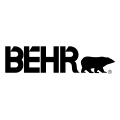 BEHR
BEHR
 Dunn-Edwards
Dunn-Edwards
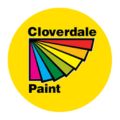 Cloverdale
Cloverdale
 SICO
SICO
 Dulux
Dulux
 General Paint
General Paint
 Valspar
Valspar
 Berger
Berger
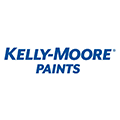 Kelly-Moore
Kelly-Moore
 Yenkin-Majestic
Yenkin-Majestic
 Truevalue
Truevalue
 Diamond vogel
Diamond vogel
 ICP
ICP
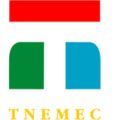 Tnemec
Tnemec
 Shawcor
Shawcor
 Lanco
Lanco
GAO Tek’s radiation meters and their applications in other industries are listed on this page: GAO Tek’s chemical melting point testers
